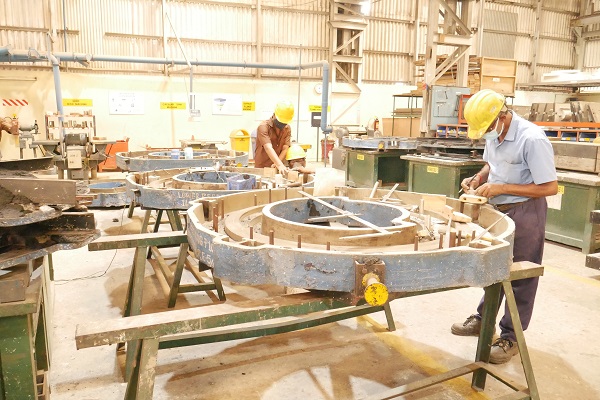July 07, 2022
Sand Casting - Casting intricate shapes seamlessly and affordably with LMW
Over 3,000 years since its discovery, iron continues to be an integral part of human society. However, iron production has come a long way from the centuries of working the iron by blacksmiths to the invention of cast iron in the industrial age.
Cast iron is still progressing in composition, micro structure, and mechanical properties, making its mark on the modern world.
Sand casting is a novel assembling strategy that enjoys the benefits of being efficient and flexible. In addition, cast segments want the advantage of being solid regardless of whether they are of mind-boggling shapes, which is troublesome if not difficult to accomplish with other assembling methods.
Sand Casting
Sand casting, otherwise called sand-formed casting, is a metal casting measure portrayed by utilizing sand as the shape material. The expression "sand casting" can likewise allude to an item created through the casting measure. Sand castings are produced in particular production lines called foundries. More than 60% of all metal castings are made using sand casting efforts.
What is the Pattern in Casting?
In casting, the pattern is the object. The casting pattern shapes the casting moulds, and the casting moulds make the metal forms, so the casting pattern is essential to the end product. Planners of casting parts will need to consider these considerations when configuring patterns.
Casting patterns involve more than just forming a cavity; they have to consider how precise the measurements are, handle the framework, and eliminate the shape.

Types of Patterns in Sand Casting
Solid Pattern:
Solid patterns simplify shapes and are the most basic. A solid pattern is a single, solid piece with no subparts or joints.
Split Pattern:
Usually, two-piece patterns are used to construct more many-sided shapes. Dowel pins are used to adjust these pieces, and these patterns are known as split patterns.
Gated Pattern:
A single pattern is used to make the pit for all the parts in one go when creating several parts simultaneously. Between the pieces are sprinters, which are called entryways. For this reason, they are called gate patterns.
Sweeping Pattern:
There can be situations in which it is more efficient to set aside the money and efforts necessary to make the whole pattern to bring the entire thing into balance. In this case, the cavity could result from clearing the pattern (which is a part of the whole shape) around a focal point. Thus, sweeping patterns are formed.
Properties of Casting Pattern
Lower Cost and Less Weight:
It is easier to track down the most accurate return on investment with a lower price and less weight.
The Opposition to Water:
The casting pattern is protected from rusting if the material you choose does not allow water to pass through. This material produces quality patterns and will last for a long time.
Solid:
Casting patterns made of rigid material have a long lifetime, so you should consider the material's substantial properties before selecting casting pattern materials.
LMW Castings
With its no-bake foundry segment, LMW provides speciality products to OEMs worldwide and in local markets. Rail transportation, machine tools, compressors, electricity, energy, and marine transmission end consumers in local and international markets.
There are three types of castings available: unmachined, pre-machined, and completely machined. In addition, pressure-tested and painted castings may be supplied to meet client specifications.
Companies worldwide have chosen Lakshmi Machine Works Limited – Foundry Division as one of their leading suppliers for the casting materials they need. Enquire now at www.lmwfoundry.com


 info@lmwfoundry.com
info@lmwfoundry.com



